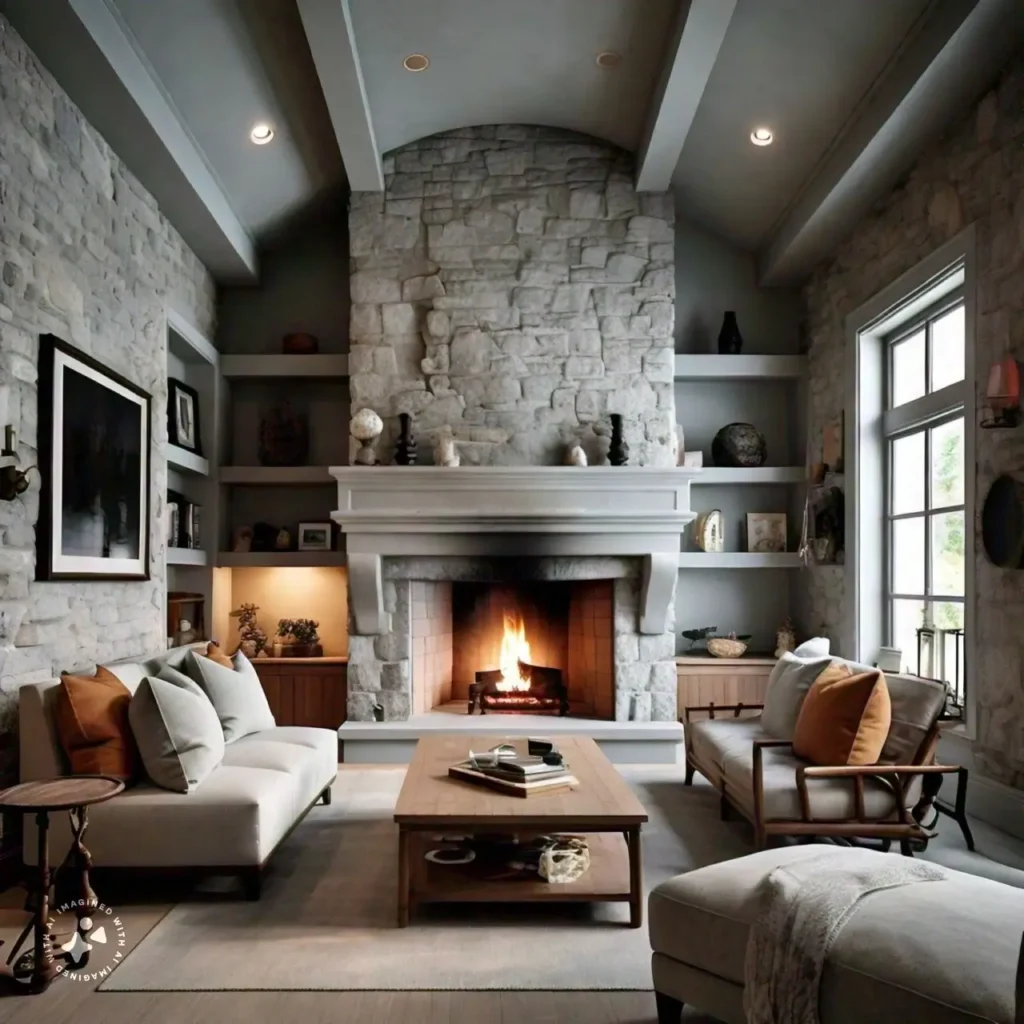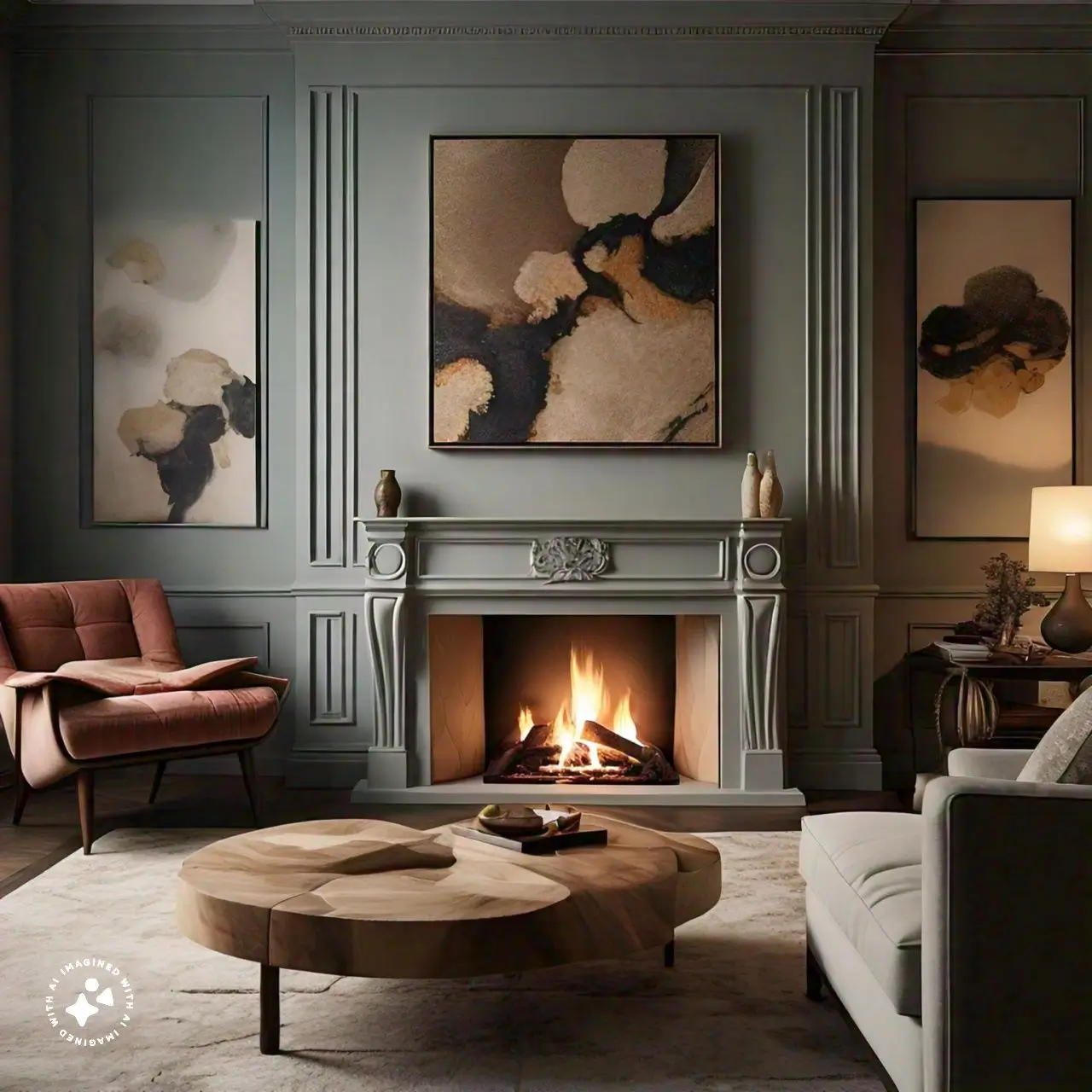Your fireplace serves as a crucial source of warmth during chilly winter nights. Yet, as the focal point of the room, it should also complement your home’s aesthetic. Painting is a powerful tool for transforming your fireplace, but should it mirror the wall’s color?
Opting for a fireplace that matches the wall creates a unified look within the space. This approach seamlessly integrates the fireplace with the surrounding wall. Conversely, consider using contrasting colors when painting if you want the fireplace to stand out as the focal point.
Selecting the ideal color for your fireplace may seem daunting. The following sections will delve into the details you need to achieve the desired results.
Why Opt for a Matching Fireplace and Wall Color?
Painting your fireplace the same color as the surrounding wall ensures it seamlessly blends into the room. This is an excellent choice for homeowners who prefer attention to be drawn elsewhere.
Your fireplace need not be the first thing guests notice upon entering the room. It doesn’t always have to be the center of attention. A matching color scheme allows the fireplace to recede into the background, letting other features take the spotlight.
Additionally, choosing a color similar to the wall creates a monochromatic look that enhances the overall aesthetic. Aim for a paint color that is two to three shades darker or lighter than the wall color.
For example, if your wall is coffee-colored, opt for a pastel shade for the fireplace. If the wall is mint green, consider sage as a complementary choice.
Related: fireplace flame color
With the right monochromatic approach, your fireplace becomes a harmonious addition to the room’s design, rather than dominating the space.
Alternative Approaches to Fireplace Painting
While matching the fireplace and wall color is a popular choice, there are other creative options to consider:
1. Choose a Neutral Color:
Using neutral paint colors like gray, tan, brown, white, cream, and ivory provides versatility. These shades complement a wide range of existing color schemes in your room. White can brighten and visually enlarge the space, while ivory or cream offers a softer touch. For a modern touch, consider matte black paint around the fireplace.

2. Consider Using Two Different Shades:
For a bold look, consider using two distinct paint colors on your fireplace. Use one shade for the mantel and another for the interior surroundings. Combining colors like black and white, or brown and olive green, can give your fireplace a unique and attention-grabbing appearance.
3. Go for Contrasting Colors:
If you want your fireplace to be the focal point, choose a contrasting color scheme. Pair light-colored walls with a dark fireplace, or vice versa. Experimenting with warm and cool color combinations can also create a striking contrast.
Selecting Paints and Finishes for Fireplace Heat Resistance
Acrylic finishes are the most suitable for fireplace redecoration, as they can withstand temperatures of up to 200°F (93.33°C). Conventional wood fires rarely reach these temperatures.
However, avoid using oil-based paints and finishes, as they may deteriorate more quickly. Intumescent coating is not recommended, as it tends to puff up when exposed to heat, making it challenging to clean.
Related: Fireplace heat protection
How to Choose the Right Paint for Your Fireplace
Consider using semi-gloss or acrylic paint for your fireplace. Semi-gloss allows for easy cleaning around the fireplace area and provides a non-reflective finish. Avoid paints with an intumescent finish, as mentioned earlier. If you’re uncertain, consult store representatives or read online reviews.
For example, the Generic White Satin Enamels Paint, available on Amazon.com, is a reliable acrylic paint option for fireplace redecoration. It’s easy to apply and offers a satin finish that can enhance the overall look of your space.
In Conclusion
Matching the fireplace color with the wall seamlessly integrates into your home’s décor. However, if you prefer the fireplace to remain the room’s focal point, consider using contrasting or bold colors in your redesign. Opt for acrylic paint for long-lasting results, as oil-based options may require more frequent refurbishment.


